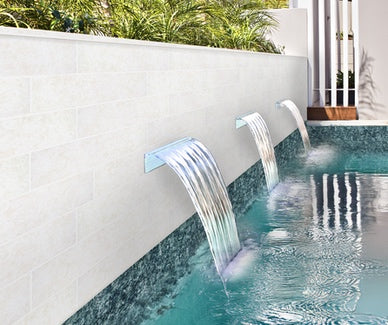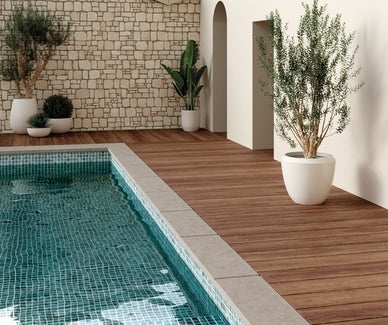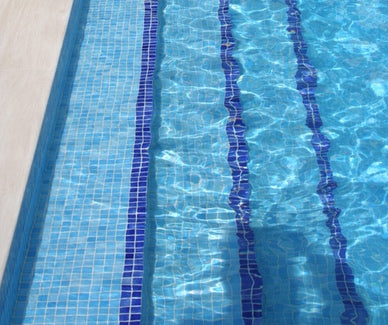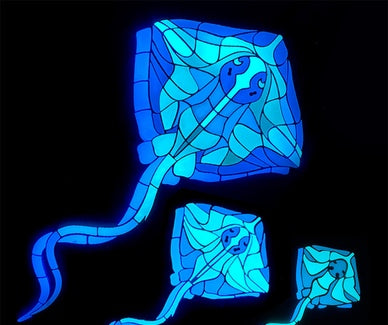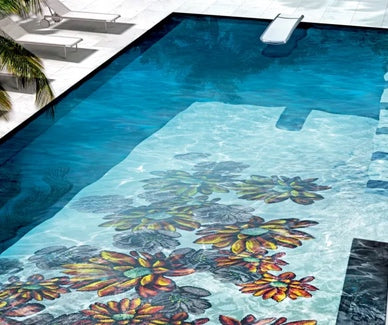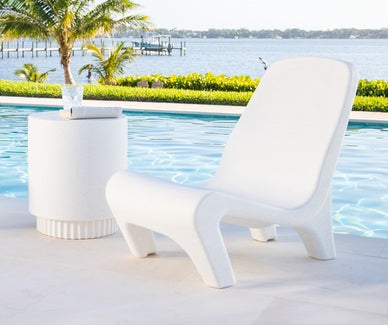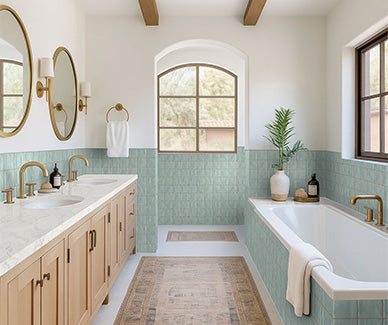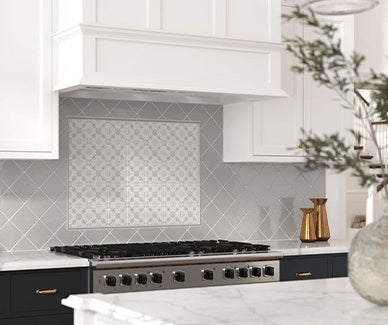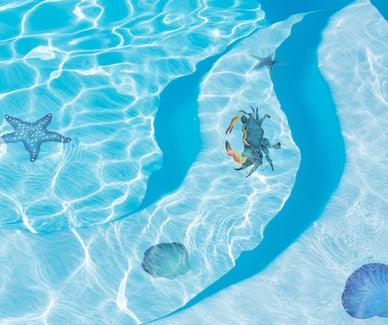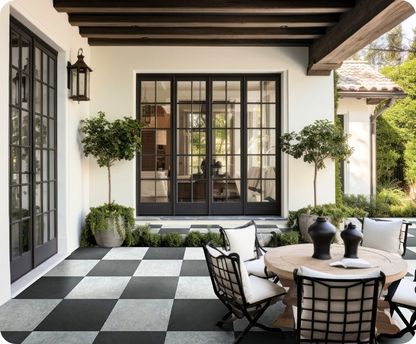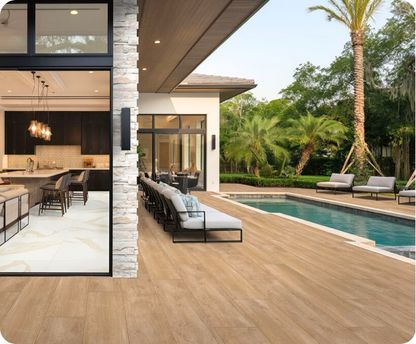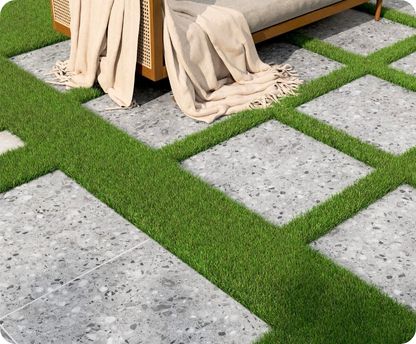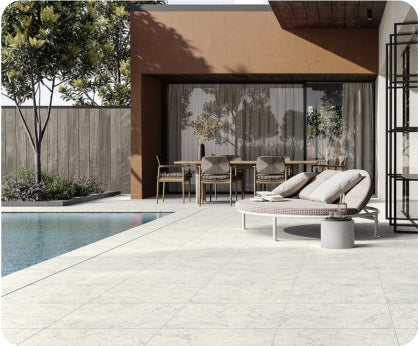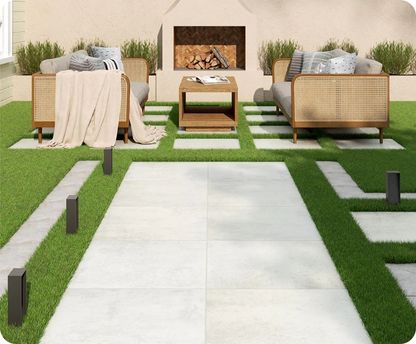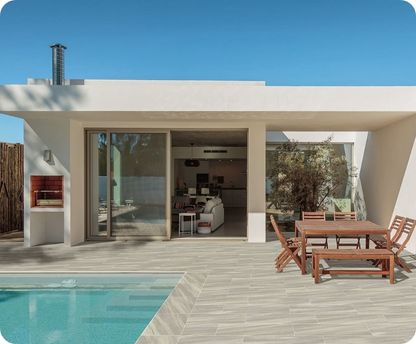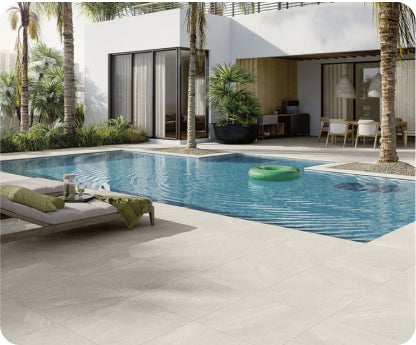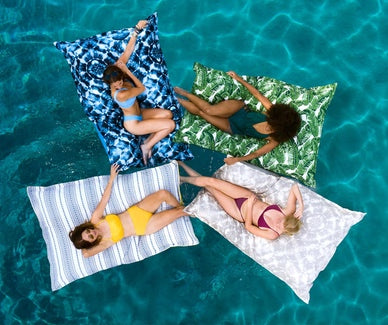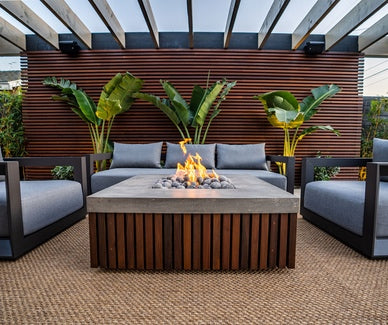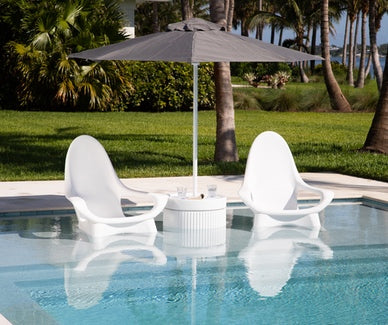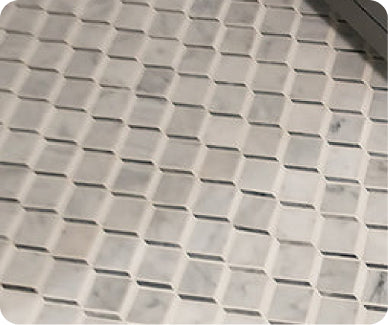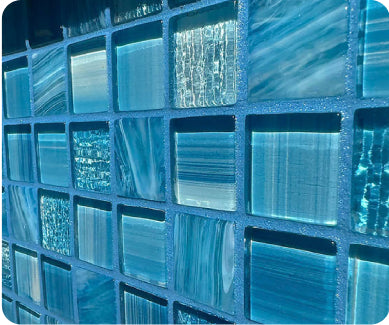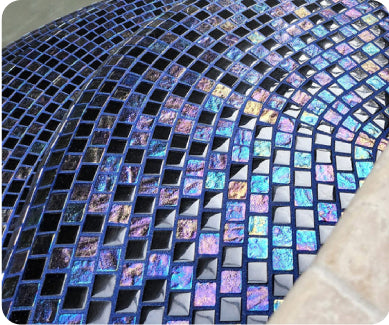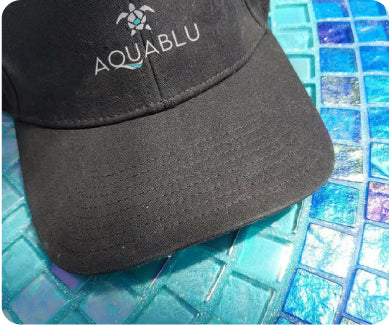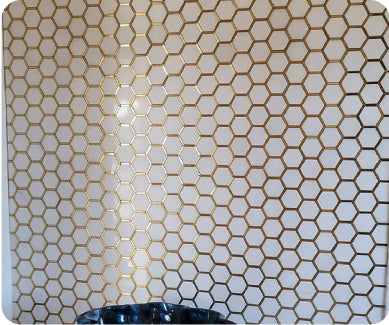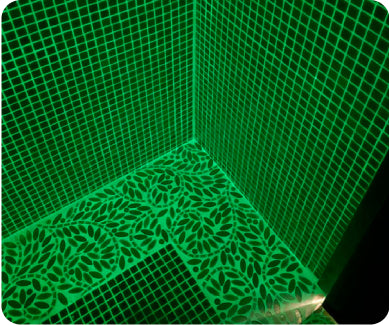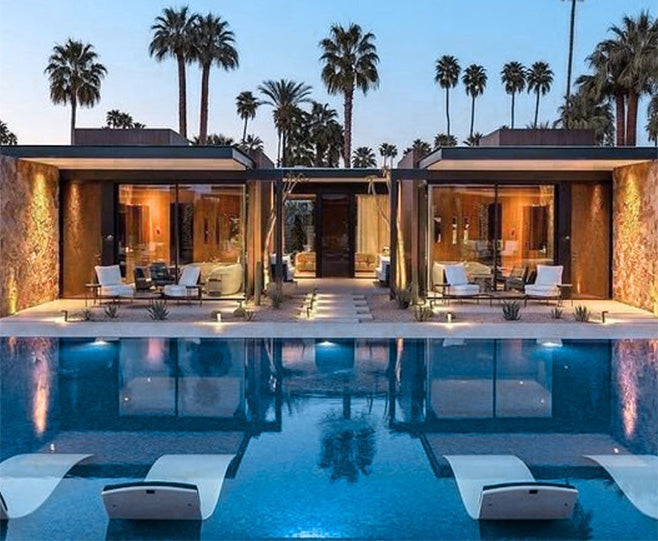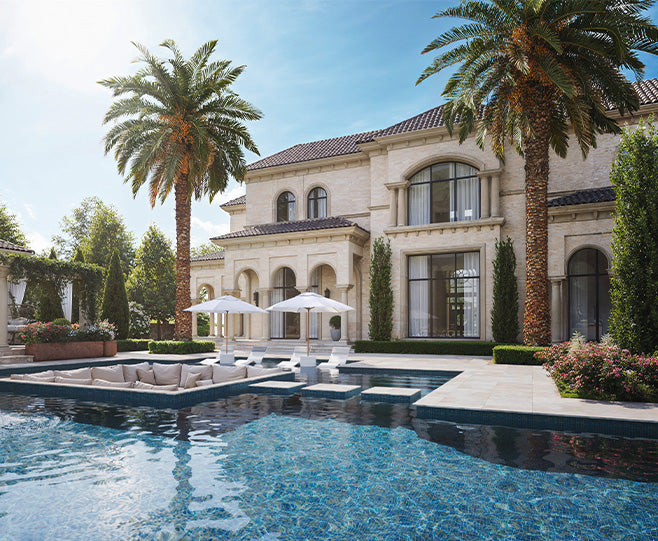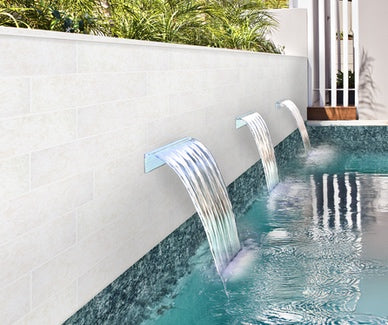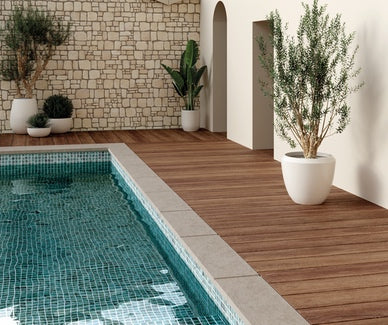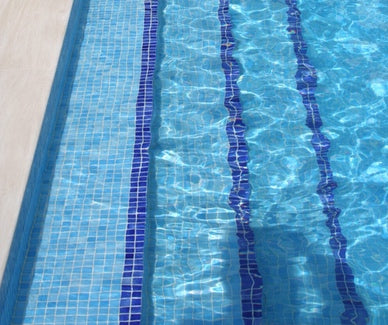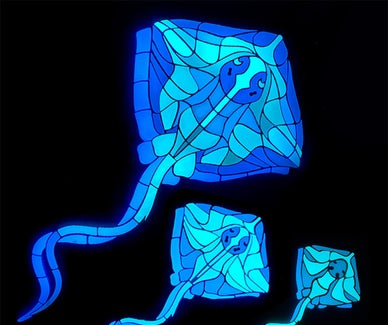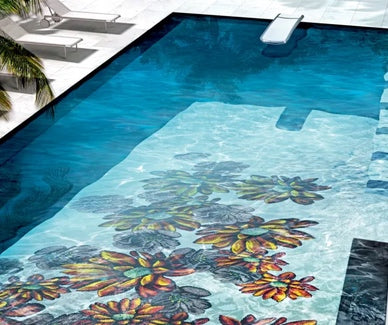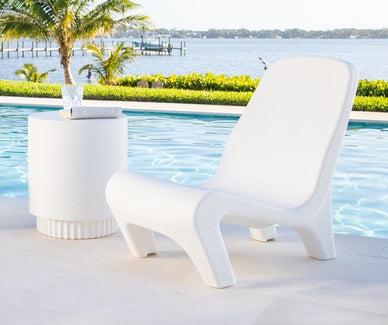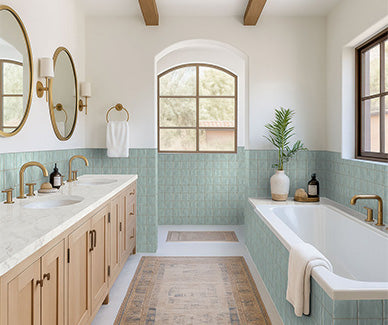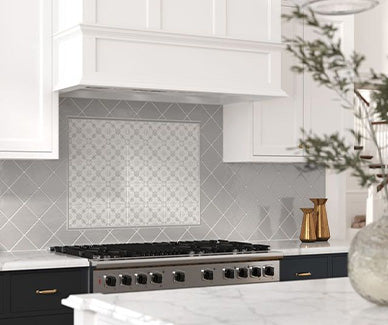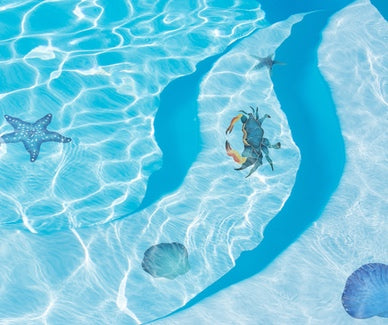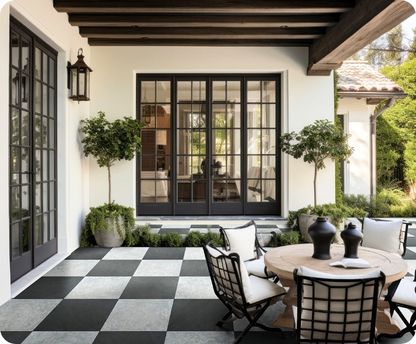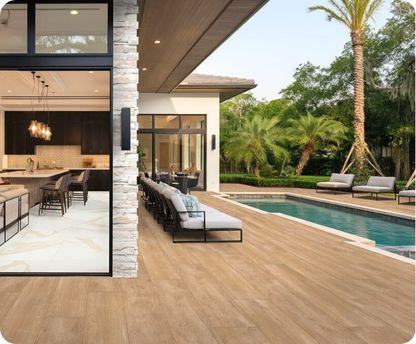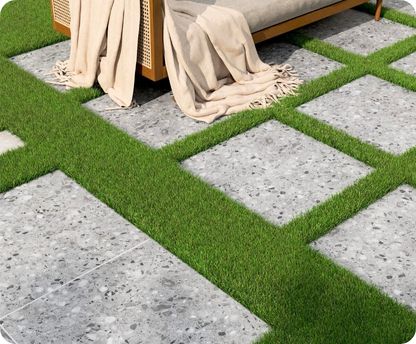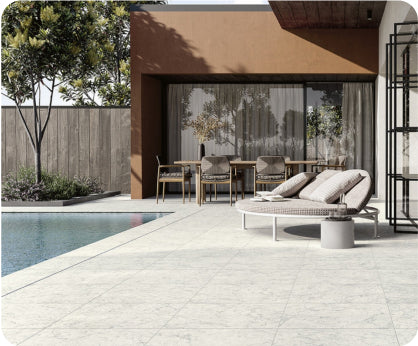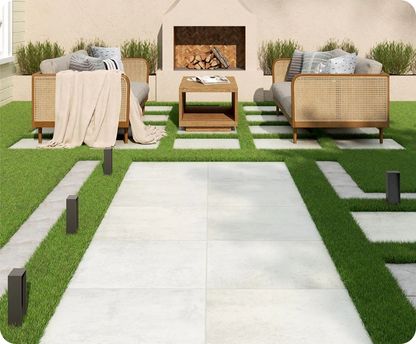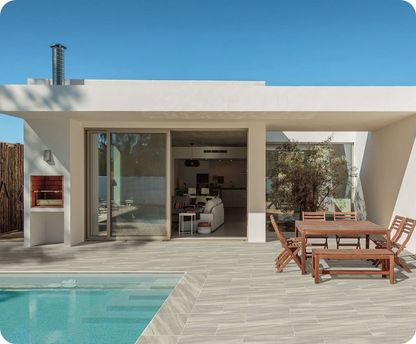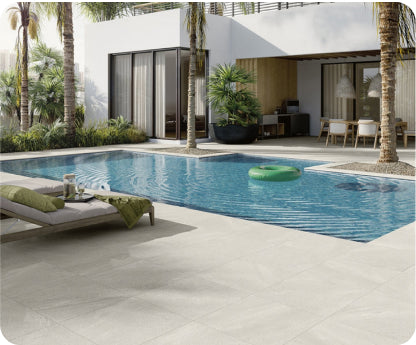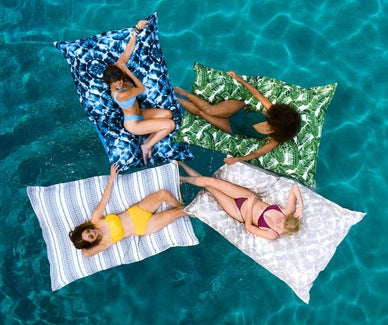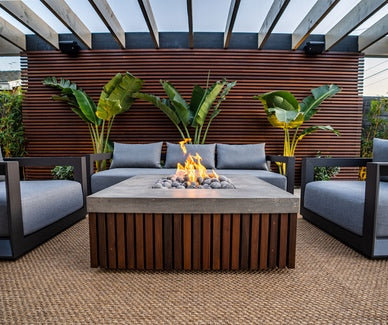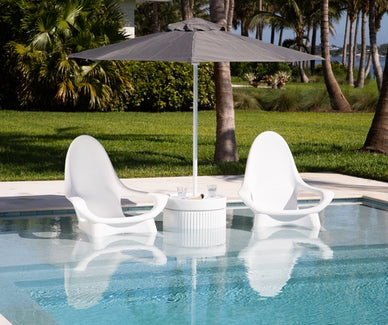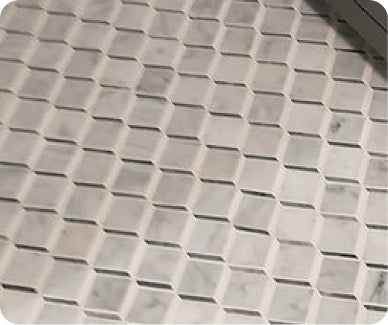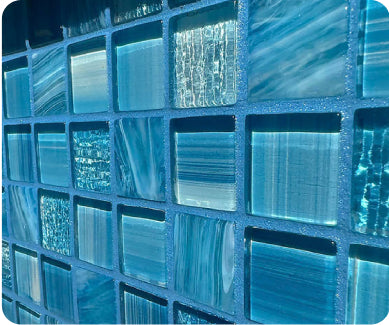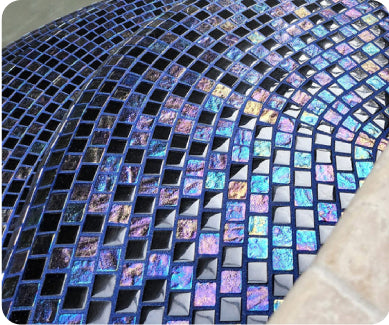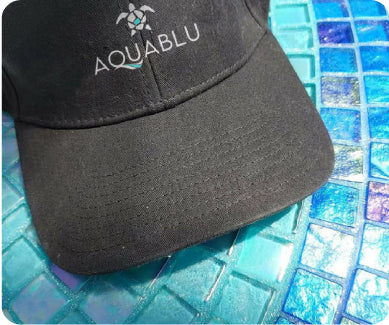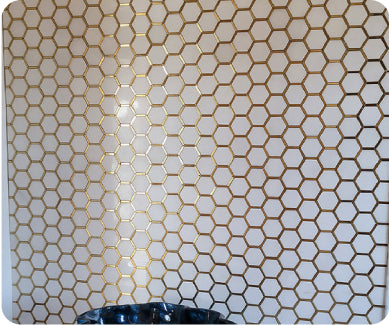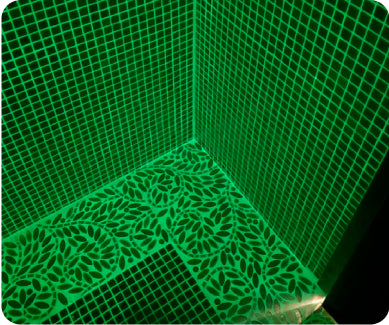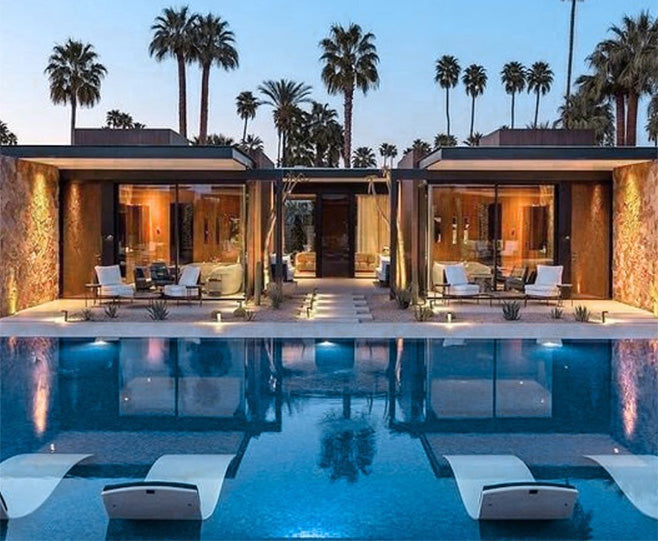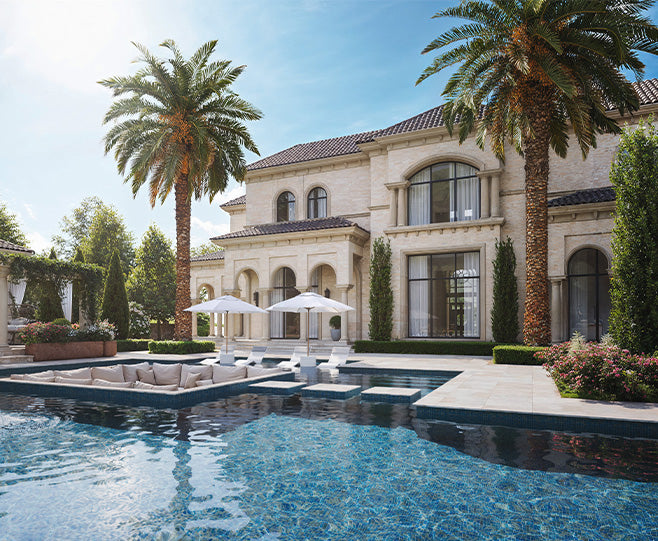Beyond Blue: Unexpected Pool Tile Colors Making Waves in 2025
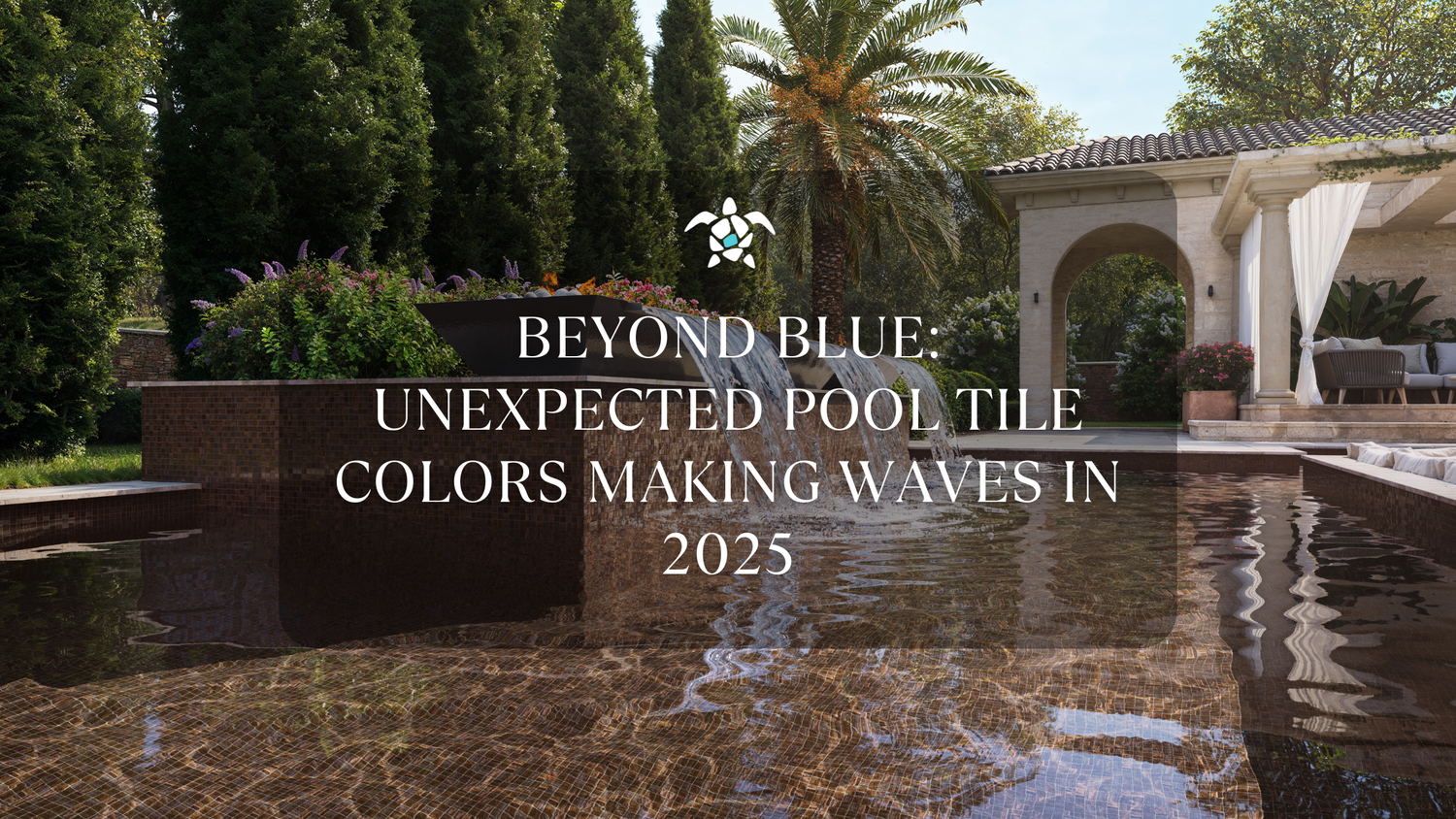
As designers push the boundaries of pool aesthetics in 2025, we’re seeing a bold shift away from exclusively blue palettes toward more daring, expressive alternatives. In this new era of modern pool design 2025, pool tile color trends are embracing contrasts, depth, and unexpected tonalities. Homeowners and architects are excitedly exploring unique pool tile colors that make a statement — from luminous emeralds to shimmering blacks, iridescent mosaics, and subtle earth-inspired neutrals.
In this post, we’ll dive into what’s trending in pool tile color palettes for 2025, explore how these choices influence ambiance and perception, and spotlight six standout tile offerings from AquaBlu Mosaics. Each product showcases how creative use of color and texture can elevate a pool into a work of art.
The Evolution of Pool Tile Color Trends in 2025
From Monotone Blue to Polychrome Expression
For decades, the dominant pool tile color has been variants of blue, aqua, and turquoise — choices that evoke clarity, coolness, and aquatic harmony. But beyond blue, 2025 is ushering in a new wave: pool tile color trends now lean into contrasts (dark vs. light), complementary accents, and mood-enhancing tones. Rather than playing it safe with all-blue somber uniformity, designers are weaving in accents or even full fields of deeper or alternative hues.
Why Designers Are Embracing Bold Colors
- Depth Illusion & Drama — Darker hues like charcoal, black, or deep green can make a shallow area read as deeper, lending a dramatic edge to modern pool design 2025.
- Ambient Reflection & Light Play — Iridescent or semi-transparent glass mosaics interact with sunlight and pool lighting to deliver shifting colors depending on time of day and viewing angle.
- Cohesion With Surrounding Landscape — Greens, earthy neutrals, and soft grays can better coordinate with terracotta, native stone, foliage, or decking materials.
- Customization & Expression — Homeowners want pools that feel unique, not cookie-cutter. Unique pool tile colors serve as visual signatures, making a pool feel like an extension of the residence’s design identity.
As you shop for your next pool, look for how the tile interacts with sunlight, ambient lighting, and water motion. Don’t just consider the “swatch” — imagine how the color shifts across surfaces and during different times of day.
Six Standout Tiles from AquaBlu Mosaics
Below are six AquaBlu tiles pushing the envelope of pool tile color trends and unique pool tile colors. I’ll describe key features that align with modern pool design 2025.
OP 25.13, 1" × 1" Glass Mosaic Tile (Bisazza, Opera Series)
The OP 25.13 glass mosaic tile is a part of the Opera collection by Bisazza, featuring semi-transparent, richly saturated glass tones that interplay dynamically with light.
At 1" × 1", this tile is fine-grain, giving flexibility for curves, gradients, or accent designs. The semi-transparent finish allows sunlight and underwater lighting to filter through, casting subtle glows and deeper color shifts. The Opera line is celebrated for merging bold color with translucency — ideal for pools that aim to feel both luminous and dramatic.
In modern pool design 2025, this tile is perfect for accent borders, gradient blends (from lighter to darker fields), or full expanses where you want a vibrant but shifting base tone. Its ability to hold visual complexity makes it a prime example of how pool tile color trends are evolving beyond uniform blue.
Black Iridescent, 1" × 1" Glass Tile (Aura Black, Vidrepur)
The Black Iridescent 1″ × 1″ glass tile (Aura Black, Vidrepur) is a bold assertion in color and reflectivity.
This tile features a deep black base that isn’t flat — instead, it’s finished with iridescence, producing subtle flashes of color (violet, teal, gunmetal) when light hits at angles. In a pool, this effect gives a kind of shimmering midnight-water illusion. While black may seem intense, the iridescence softens it, harmonizing with more conventional pool hues.
In modern pool design 2025, this tile is ideal for creating contemporary contrast zones (e.g., waterline accents, deep-end borders, or full basins for dramatic effect). It’s a prime illustration of the growing appetite for unique pool tile colors, especially those that interact dynamically with light rather than sitting flat.
OP 25.08, 1" × 1" Glass Mosaic Tile (Bisazza, Opera Series)
The OP 25.08 (1" × 1") from the same Opera series offers a variation in hue within the Opera family.
While sharing the same base qualities of translucency and vibrant color as OP 25.13, OP 25.08 differs in its tonal attributes (likely a cooler or differently hued glass within the Opera palette). This allows designers to layer mosaics subtly — combining OP 25.08 and OP 25.13 to create gradients, shifts, and visual depth across the pool floor or walls.
This tile is a go-to for designers embracing pool tile color trends that rely on micro-variation. By shifting from one Opera tone to another, it’s possible to engineer gentle transitions of color across shallow-to-deep zones — a technique very much in alignment with modern pool design 2025.
Log Penny Round Mosaic Glass Tile
The Log Penny Round Mosaic tile offers a round, pebble-like geometry in glass — but with a twist of visual warmth and softness.
Rather than the hard-edged squares or rectangles, penny rounds evoke a more organic, water-worn feel while retaining the reflective qualities of glass. The “Log” designation suggests a wood-tone or neutral adaptation, so these tiles might lean toward soft earth or amber hues that mimic driftwood, stone, or riverbed textures.
In modern pool design 2025, this tile is well-suited for accent zones, shallow lounge ledges, or transitional edges that tie the pool into its surroundings. It’s a beautiful example of unique pool tile colors that move away from aquatic blue toward more grounded, nature-inspired palettes — a trend gaining fat traction in contemporary designs.
GM 20.97, ¾" × ¾" Glass Mosaic Tile (Bisazza)
GM 20.97 is a finer-scale Bisazza glass mosaic tile (¾" × ¾") offering a delicate tessellation effect.
The smaller unit size means more grout lines per square foot, which can diffuse light and soften reflections. This can help reduce glare or visual harshness in areas of strong overhead light. Additionally, smaller mosaics let you achieve smoother curves and more intricate patterns. The GM range typically embodies subtle, stylish tonalities within the Bisazza palette.
For modern pool design 2025, GM 20.97 is a smart pick when you want visual texture without overt color shifts. Use it for large fields when you want the eye to rest on water motion rather than bold color, or combine it with more dramatic tiles (like OP 25.13 or Black Iridescent) for accent frames or insets.
Tahiti Emerald Slip-Resistant 6″ × 6″ Porcelain Tile
The Tahiti Emerald Slip-Resistant 6″ × 6″ porcelain tile brings a luminous green tone into the conversation.
Unlike delicate glass mosaics, this tile is robust, slip-resistant, and well suited for wet surfaces. Its emerald tone is bold yet natural, offering a strong alternative to aqua or turquoise without going dark. In sunlight, it can feel jewel-like, and underwater it may read as a soft green shimmer.
In the context of pool tile color trends, green is emerging as a sophisticated contender. Pairing unique pool tile colors like emerald with contrasting black or neutral mosaics allows for dynamic visual narratives. In modern pool design 2025, Tahiti Emerald is ideal for full pool floors, accent walls, or juxtaposed fields that tie the water to surrounding greenery.
Designing With Unexpected Colors: Tips & Ideas
-
Start With a Dominant Base, Then Accent
If you’re not ready to fully depart from blue, begin with a foundational aqua or soft blue and layer in bands or focal zones of deeper or contrasting hues. The accent draws the eye while keeping overall visual balance. -
Use Lighting to Amplify Color
Subsurface LED lighting, fiber optics, or uplights can dramatically change how unique pool tile colors appear after sunset. Iridescent or semi-transparent mosaics become even more dynamic under controlled lighting. -
Embrace Gradients and Blended Transitions
Instead of sharp boundaries, use mosaic gradations (e.g., blending OP 25.08 → OP 25.13) or soft transition bands to move from light to dark or from one hue to another. This technique aligns perfectly with pool tile color trends that favor subtlety over stark contrast. -
Contrast With Surrounding Hardscape
If your deck, coping, or retaining walls skew warm earth tones or grays, choosing a tile that complements or offsets those tones can integrate the pool visually into its context. -
Plan for Maintenance and Wear
Deeper or darker tiles can hide certain stains or mineral buildup better than ultra-light mosaics. But be aware that grout selection, water chemistry, and cleaning frequency will impact appearance over time. -
Mock It Up — Samples and Renderings
Because colored glass mosaics and iridescent tiles change under light, always request samples (AquaBlu does this) and view them under real sunlight and indoors to confirm your intended effect.
Frequently Asked Questions (FAQ)
Q: Will a non-blue tile make the water look “dark” or murky?
A: Not necessarily. Many modern glass mosaics, especially semi-translucent or iridescent ones, let light penetrate and softly scatter, preserving water clarity. When balanced with lighter surrounding tones or strategic lighting, the pool can feel luminous rather than murky.
Q: How do these unexpected colors affect resale value?
A: As pool tile color trends shift, buyers increasingly view unique design touches as value-adds. A tastefully executed palette can differentiate a property and appeal to discerning buyers seeking refined, modern aesthetics.
Q: Can deep colors fade over time due to sunlight exposure?
A: High-quality glass mosaics and porcelain tiles rated for outdoor use (such as those offered by AquaBlu) resist UV fading. Still, proper water chemistry and maintenance practices help preserve the original vibrancy.
Q: Are there cost differences when using specialty or iridescent tiles?
A: Yes — unique tiles like iridescent glass or specialty mosaics often carry a premium over typical blue glass or standard ceramic tiles. However, many projects amortize this cost by reducing reliance on decorative features elsewhere.
Q: What’s a good starting point for mixing bold and neutral tile elements?
A: A balanced approach is to use bold or dark tile for accents (e.g., waterline bands, deep-end zones) while keeping main swim areas in lighter or more neutral tones. This respects modern pool design 2025 principles of visual comfort and hierarchy.

